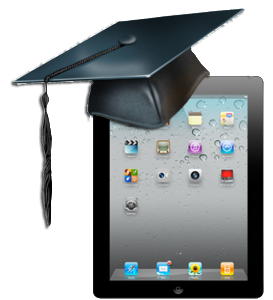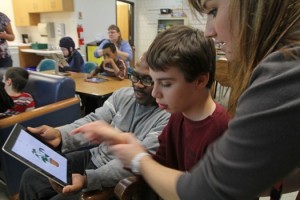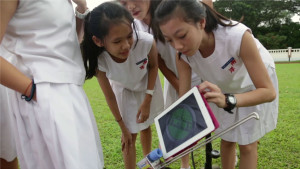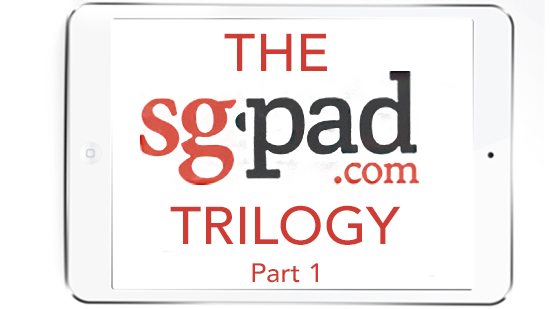How’s everyone? Hope you’ve had a fine July thus far. Today, SGPad is starting its very own trilogy: A 3-part series exploring the benefits of iPads for
• Schools
• Public Places
• Personal Use
The lifelong process of learning has been intertwined with the advent of technology in the 21st century. This change began the evolution of conventional teaching methods. For those born before 1990s, classes were conducted largely without technology’s involvement. The generation born in 1990s grew up alongside the advancement of computers, where regular lessons were conducted in school computer labs. In view of this trend, what sort of technology will intervene in the learning of those born in 2000s? One possible answer to the question is perhaps, iPads.

In terms of software, the iPad comes with a multitude of free but immensely useful Apps. Apps such as keynote, iBooks, iTunes U or dictionary are some of the best teaching aids. For example, a teacher can upload a piece of teaching material on iBooks which students read during in-class discussions. Students can immediately access the dictionary through the Internet on their iPads and check up meanings of words they don’t understand.
In terms of hardware, the iPad is lightweight and easily portable. According to Straits Times, primary students in Singapore are at risk of scoliosis due to carrying heavy bagpacks to school. Since they need to bring textbooks and notes for lessons, this is inevitable. However, what if some of the load can be reduced by replacing these mandatory items with an iPad?
Nonetheless, the iPad has much potential to transform the learning process into one where students learn more efficiently and effectively.
Below are some examples of instances when iPads have benefited students:
Special-needs students

In the third year of using iPads at Northdale Middle School in Coon Rapids, these tablet computers have led to increased engagement among some of the most severely disabled students and have accelerated their learning. Unlike before, it helped teachers understand what the students were learning from each lesson that was conducted using iPads.
The iPad also comes with assistive features that change the way that students with special needs learn. These features include: Guided access, speak selection, Siri, dictation or speech. Take ‘guided access’ for example, it helps students with autism or other attention and sensory challenges stay on task. (Source: www.apple.com)
University students

Under the new University of California Irvine’s iMedEd program, each of 104 medical students in the class of 2014 received an iPad in 2010, becoming the first class to receive iPads. In 2013, UC Irvine reported that this class of students scored an average of 23% higher on national exams than previous classes, even though their incoming GPA and MCAT scores were comparable. (Source: Mobihealthnews.com)
Secondary school students

In 2011, Nanyang Girls High School spent S$135,000 to buy 150 iPads for 140 students and 10 teachers in a pilot project. In this project, they hoped to foster greater self-confidence and collaboration, and provide resources that would encourage the girls to participate more fully in the learning process.
One of the case studies is where history teacher Ong Lee Hua, with iBooks Author on Mac, assembled an engaging Multi-Touch book for her lesson on the Hock Lee bus riots, during which striking workers and students clashed violently with police in post-WWII Singapore. In addition to reading text and viewing photos of the event on iPad, the class could watch historical video clips, listen to songs from the era and test their knowledge with quiz questions. If they came across an unfamiliar term, they could simply tap to select the word and find a definition.
Other noted advantages include:
• Having fun and learning at the same time
• Enabling students who are more shy to speak up and participate more readily
• Asking of questions that indicate greater comprehension and engagement by students
Kindergarten students

A study on 266 kindergarteners in Auburn, Maine has shown that students who use iPads score better in every literacy test than those who don’t.
Isn’t it amazing how an iPad contributes so much to education? This begs the question – ‘Should you rent an iPad?’ In terms of extra logistics, manpower, cost and other considerations, perhaps renting is a wiser decision. As always, our team at SGPad will always be ready to lend you a helping hand when you need iPad rental services. Just send us an email at [email protected] or call us at (+65) 6677 1533! ☺
Xue Ming



